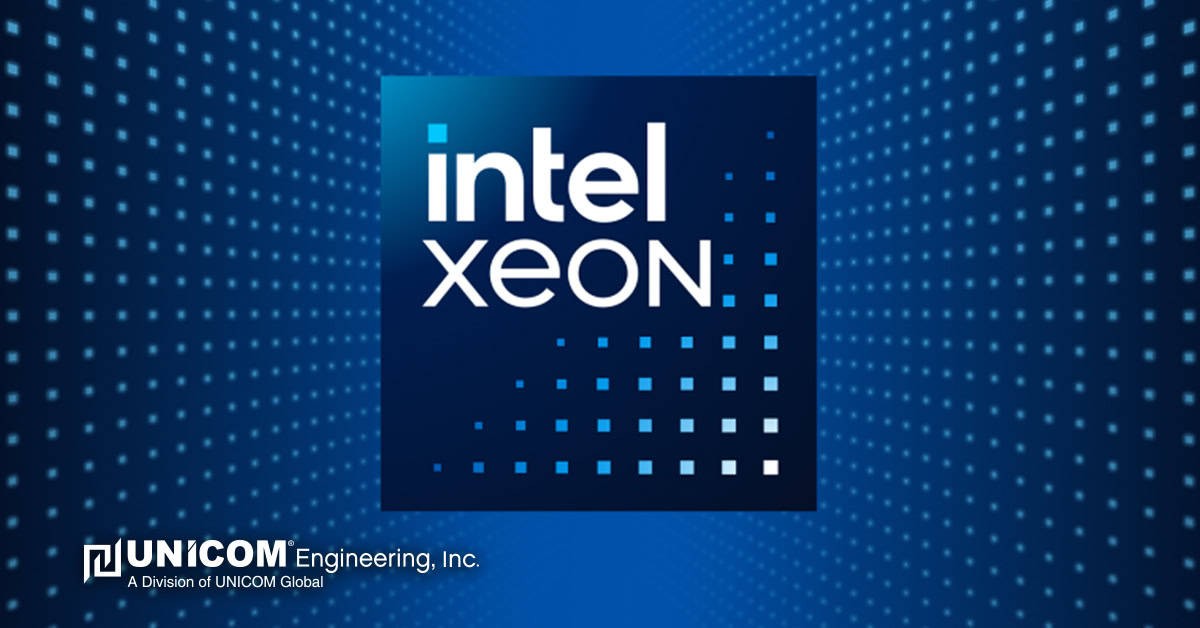Today's IT leaders are called upon to deliver better-performing, complex applications while holding the line on costs and promoting efficiency. Use cases like generative AI and workload automation are pushing the need for performance, and simultaneously, microservices are replacing large applications in a trend that calls for efficiency.
In response, Intel has introduced two types of processors in its Intel Xeon 6 generation: the P-core and E-core.
A Common Foundation
Common in the Intel Xeon 6 P-core and E-core families are the same instruction sets, BIOS, and I/O accelerators like Intel Quick Assist Technology (Intel QAT), Intel Data Streaming Accelerator (Intel DSA), and Intel Memory Analytics Accelerator (Intel IAA), among others. Additionally, both chipsets support the same drivers and operating systems. However, this is where their similarities end.
Intel Xeon 6 P-cores
Intel developed its Intel Xeon 6 Performance-cores (P-cores) to address data center applications in which performance is paramount. Over 5th Gen Intel Xeon Scalable processors, they offer:
-
Up to 2X higher performance for integer and floating point throughput
-
Up to 2X higher GenAI performance with BF data types
-
Up to 2.3X higher HPC performance based on the industry-standard HPCG benchmark.
Compared to 2nd Gen Intel Xeon Scalable processors, Intel Xeon 6 processors deliver:
-
Up to 6.4x higher floating point throughput
-
Up to 6.1X higher HPC performance.
Other enhancements include AI acceleration in every core through Intel Advanced Matrix Extensions (Intel AMX), which results in faster int8 and BF16 inferencing and introduces support for FP16-trained models, achieving up to 2,048 floating point operations per cycle per core for int8 and 1,024 for BF16/FP16. Additionally, the fastest DDR5 memory is available with Multiplexer Combined Racks (MCR) DIMMs, providing 37% more bandwidth than RDIMMs, and an expected data transfer rate of up to 8,800 mega transfers per second (MT/s). Performance is further focused with up to 128 cores per socket and an L3 cache of up to 504 MB, all while maintaining exceptionally low latency.
At a high level, Intel Xeon 6 Processors with P-cores enable businesses to deploy the latest AI models to support language, image recognition, and recommendation systems, as well as generate deeper insights from simulations.
Intel Xeon 6 E-Cores
For data center environments in which efficiency is the priority, Intel offers its Intel Xeon 6 Efficient-cores (E-cores). Compared to 5th Gen Intel Xeon Scalable processors, Intel Xeon 6 E-cores provide:
-
Up to 1.5x better performance/watt for server-side Java throughput
-
Up to 1.6x better performance/watt for MySQL OLTP
-
Up to 1.5x higher AVC performance/watt
In comparison to 2nd Gen Intel Xeon Scalable processors, Intel Xeon 6 E-cores offer:
-
Up to 2.3x better performance/watt for server-side Java throughput
-
Up to 3.7x higher performance for MySQL OLTP
-
Up to 4.2x higher AVC performance, with up to 2.6X better performance/watt
-
Up to 4.1x higher 5G UPF performance, with up to 2.6X better performance/watt
Other advantages of E-Core include replacing servers equipped with 2nd Gen Intel Xeon scalable processors at a ratio of 4.3 to 1 and consolidating racks of 2nd Gen Intel Xeon Scalable processor systems at a ratio of 3 to 1. Additionally, E-Core offers up to 288 cores per socket and 216 MB L3 cache while maintaining low latency.
Intel Xeon 6 processors with E-cores are ideal for high-traffic, low-intensity workloads like networking, cloud-native microservices, and analytics. They offer the best possible performance per watt and rack density out of the current Intel lineup, allowing data center leaders to run diverse workloads efficiently.
Working Together
What's important to note is that Intel envisions its customers combining P-Core and E-core systems to achieve the greatest possible benefits. Specifically, high-performing P-core systems can finish complex tasks sooner, allowing efficient E-core systems to handle day-to-day operations with lower TCO.
For example, to maximize the power needed for vector-based, compute-intensive workloads like AI (running on P-cores), E-cores can be used to balance other workloads to minimize consumption. In a similar way, customers can run complex relational databases on P-core servers and their simpler, non-relational counterparts on E-core systems.
Intel Xeon 6 Processors - User Experience
Finally, continuing its tradition of quality, Intel Xeon 6 Processors support the best possible reliability, availability, and serviceability. In addition, to protect against the latest security threats and promote privacy compliance, Intel offers Intel Trust Domain Extensions (Intel TDX) and Intel Software Guard Extensions (Intel SGX). Intel TDX provides isolation and confidentiality at the VM level, and Intel SGX isolation at the application level.
Leverage Performance and Efficiency with Intel and UNICOM Engineering
There's no need to devote internal resources to hardware integration and deployment when you can leverage the expertise of a capable partner like UNICOM Engineering.
By integrating Intel's advanced processors into comprehensive solutions tailored for diverse industries, UNICOM Engineering ensures your data center's potential is fully realized. Whether facilitating faster time-to-market for technology innovators or providing end-to-end support for complex AI and IoT deployments, UNICOM Engineering is at the forefront of bringing these cutting-edge technologies to life.
Schedule a consultation today to dive into the possibilities of AI at the Edge and harness the capabilities of the latest Intel technology.
